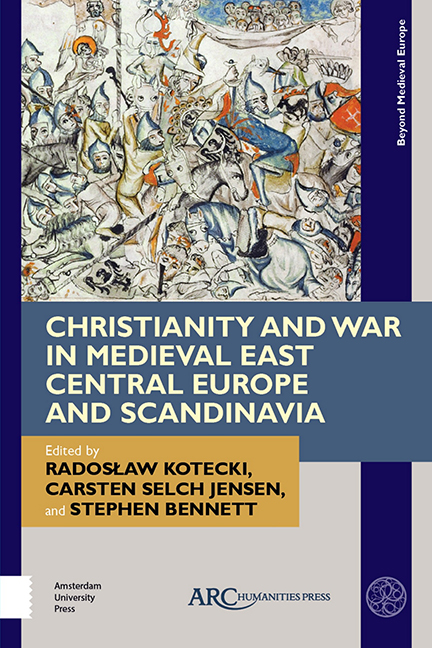Chapter 9 - Religion and War in Saxo Grammaticus’s Gesta Danorum: The Examples of Bishop Absalon and King Valdemar I
Published online by Cambridge University Press: 27 May 2021
Summary
Because other nations are in the habit of vaunting the fame of their achievements, and joy in recollecting their ancestors, Absalon, archbishop of Denmark, had always been fired with a passionate zeal to glorify our fatherland; he would not allow it to go without some noble document of this kind and, since everyone else refused the task, the work of compiling a history of the Danes was thrown upon me, the least of his entourage; his powerful insistence forced my weak intellect to embark on a project too huge for my abilities.
THIS OPENING QUOTE illustrates how Saxo Grammaticus presented his grand narrative on the deeds of the Danes—the Gesta Danorum—probably completed shortly after 1208. He had been given the task of compiling this history by the head of the Danish Church, Archbishop Absalon (in office 1178–1201) who himself became one of the leading characters in the latter part of the chronicle.
Gesta Danorum is, without doubt, the most famous text of the entire Danish medieval period, having influenced many later national narratives as well as intrigued professional historians for generations. In this chapter, the focus will be on the relationship between religion and war in the latter part of Saxo's Gesta Danorum. Here the chronicler recounts key events during the lifetimes of Absalon and his foster brother King Valdemar I (r. 1154–1182), when Valdemar became sole regent in 1157 following several years of internal turmoil and civil war. It is also a period in which the campaigns against the pagan Wends east of the river Elbe intensified, culminating in 1168 with the conquest of the main Wendic settlement of Arkona on the island of Rügen—an event that plays a very prominent role in Gesta Danorum. Following this, the chronicle covers the destruction of the other important pagan strongholds and the conquest of the remaining Wendic lands, at which point the focus turned further east towards the lands of the Estonians in the early 1170s. This prompted the beginning of nearly two hundred years of Danish continuous involvement in the northernmost Estonian provinces, which however lies outside the overall narrative frame of Saxo's work.
- Type
- Chapter
- Information
- Publisher: Amsterdam University PressPrint publication year: 2021



